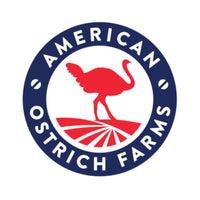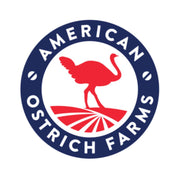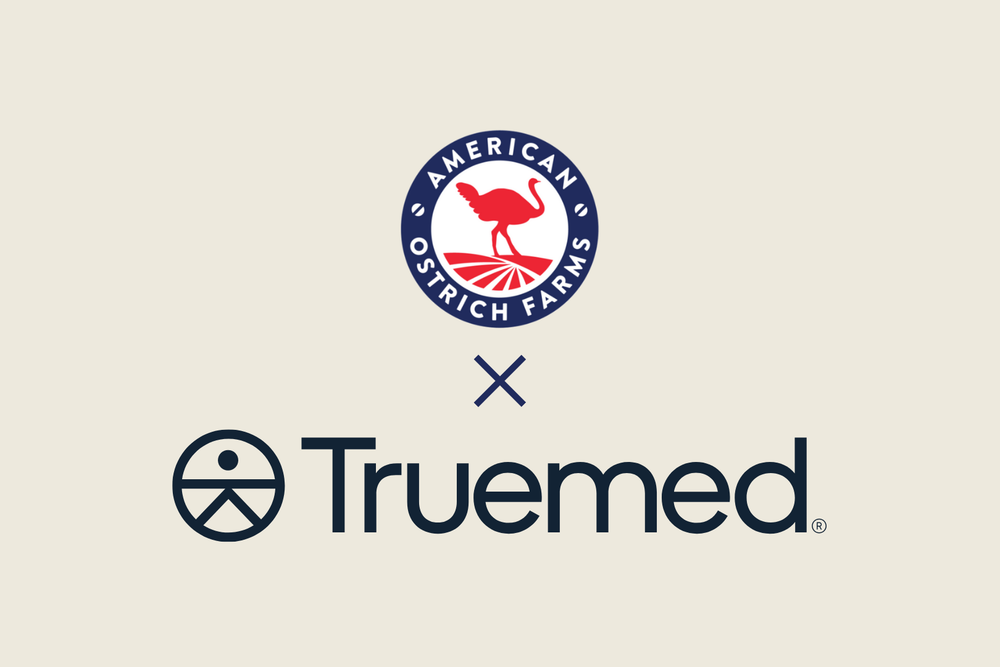When exploring the world of alternative meats, you may have noticed that ostrich meat comes with a higher price tag compared to more common options like beef or chicken. So, what goes into the cost of raising ostriches and producing this unique protein? Let’s break it down by exploring the key factors that influence the price of ostrich meat from American Ostrich Farms.
NON-INDUSTRIALIZED FARMING: PUTTING QUALITY FIRST
At American Ostrich Farms, we are dedicated to non-industrialized farming practices. Unlike large, industrial livestock operations, our ostriches are raised in low-density environments with ample space to roam. This approach not only guarantees a better quality of life for the animals, but also results in a higher-quality meat product. However, lower stocking densities naturally mean we produce fewer animals, limiting production capacity.
The result? A more labor-intensive process that increases costs per bird. Our commitment to sustainable farming practices comes with a higher price, but it ensures a premium product.
QUALITY FEED: INVESTING IN NUTRITION
Ostriches require a premium diet rich in essential nutrients, and we take no shortcuts when it comes to feeding them. Providing top-tier feed translates to better health for the animals and ultimately, superior-tasting meat. However, because we operate on a smaller scale, we are unable to take advantage of the bulk purchasing power available to larger producers.
This emphasis on quality over quantity means we pay more for feed, but we believe the outcome—tender, flavorful meat—is worth every penny. For our customers, it’s not just about sustenance; it’s about enjoying a superior eating experience.
SKILLED AND DEDICATED STAFF: THE HUMAN ELEMENT
Raising ostriches is not like raising cattle or chickens. It requires specialized knowledge and hands-on care from a team of skilled workers. From breeding to hatching to raising and processing, every step demands expertise.
We ensure our staff is well-compensated with living wages and benefits, fostering a positive and stable work environment. On-site housing and round-the-clock monitoring further ensure the safety of our flock. This level of care directly impacts the quality of the meat, but it also adds to the overall cost of production.
UNCONVENTIONAL LIVESTOCK: OSTRICHES ARE UNIQUE
Ostriches are far from conventional livestock, and raising them requires special infrastructure, from breeding facilities to pasture designs and custom-built processing plants. Ostrich farming also lacks the widespread subsidies or incentives that other more traditional livestock industries benefit from, meaning much of the cost of raising ostriches is shouldered directly by the farm.
Additionally, the ostrich industry is still relatively small, with fewer economies of scale to drive down costs. All of these factors contribute to the higher price of ostrich meat compared to beef, pork, or chicken.
ON-SITE PROCESSING: CONTROLLING THE ENTIRE PROCESS
We believe in overseeing every stage of meat production, which is why we’ve invested heavily in USDA-inspected processing facilities right on our ranch. This allows us to closely monitor the quality of every cut of meat, ensuring it meets the highest standards of safety and flavor.
Our on-site processing reduces the need for long-distance transportation of live animals, cutting down on stress for the birds and minimizing our environmental impact. However, specialized equipment, materials, and staff training come at a cost, contributing to the price of the final product.
MARKETING: BUILDING AWARENESS AROUND OSTRICH MEAT
As a lesser-known protein, ostrich meat requires significant marketing efforts to reach and educate potential customers. While beef and chicken are household staples, ostrich is still new to many consumers. We invest in spreading awareness about the health benefits, sustainability, and culinary versatility of ostrich meat.
The resources required for consumer education and marketing add to the cost of production, but these efforts are vital to growing the market for this exceptional protein. Without consumer awareness, even the best product would struggle to gain traction.
DIRECT-TO-CONSUMER DISTRIBUTION: FROM FARM TO TABLE
Delivering our meat directly to consumers is a complex process. From the moment our ostrich meat leaves the processing facility, it requires careful storage, transportation, and distribution. We prioritize frozen shipping to ensure that the meat arrives fresh and in perfect condition at your door.
Maintaining this level of quality throughout the supply chain requires temperature-controlled logistics and specialized packaging, adding to the overall cost of the product. However, this ensures that you receive the highest quality meat every time.
SUSTAINABLE PRACTICES: ENVIRONMENTAL RESPONSIBILITY
Sustainability is at the heart of what we do at American Ostrich Farms. Our farming methods include investing in green infrastructure such as wastewater treatment and extensive composting to reduce our carbon footprint. We also use curbside-recyclable, USA-made shipping materials to minimize waste.
While these practices increase production costs, they reflect our deep commitment to environmental stewardship. When you purchase ostrich meat from us, you're not only getting a premium product but also supporting sustainable agriculture.
THE VALUE OF OSTRICH MEAT: MORE THAN JUST A PRICE TAG
When you consider the intricate, labor-intensive process of raising ostriches and the dedication to sustainable practices, the price of ostrich meat begins to make sense. Each step, from breeding to processing, is thoughtfully designed to prioritize quality and environmental responsibility. At American Ostrich Farms, we take pride in providing a premium, sustainable meat that is both delicious and nutritious.
By understanding the factors behind the price, you can fully appreciate the value in every bite of this exceptional protein.







